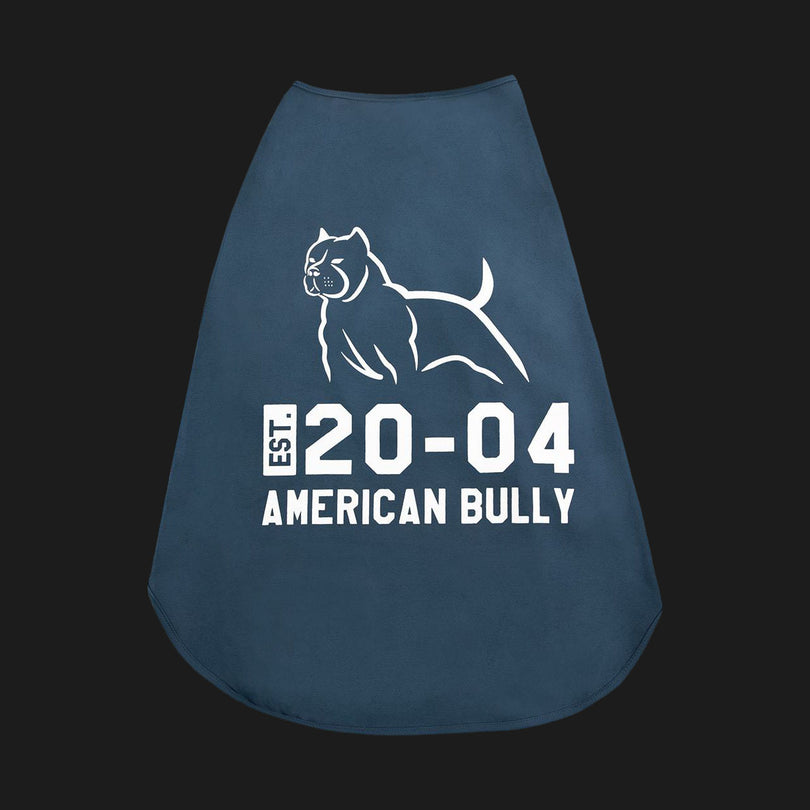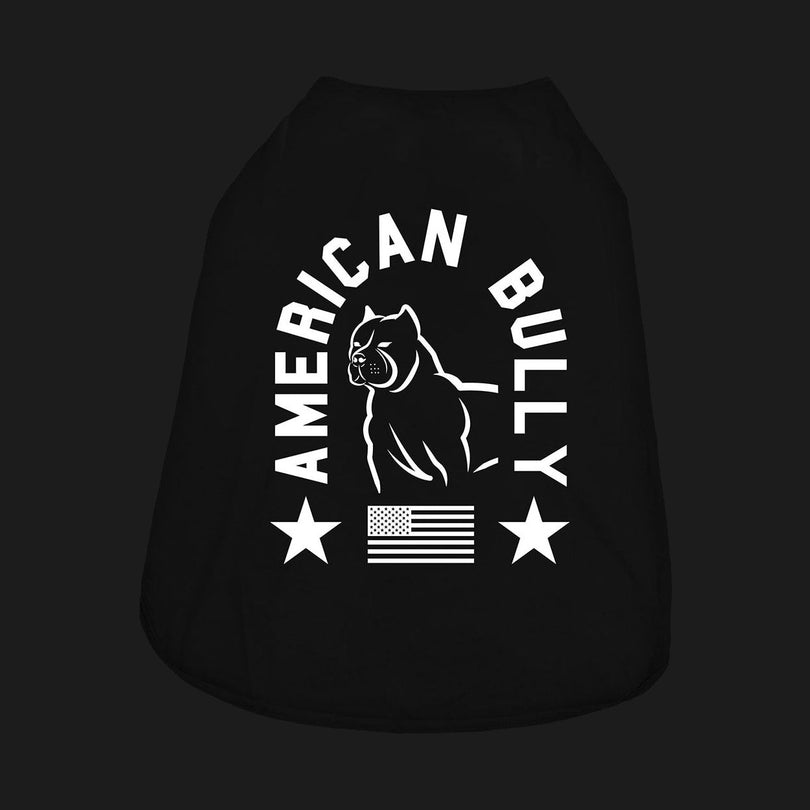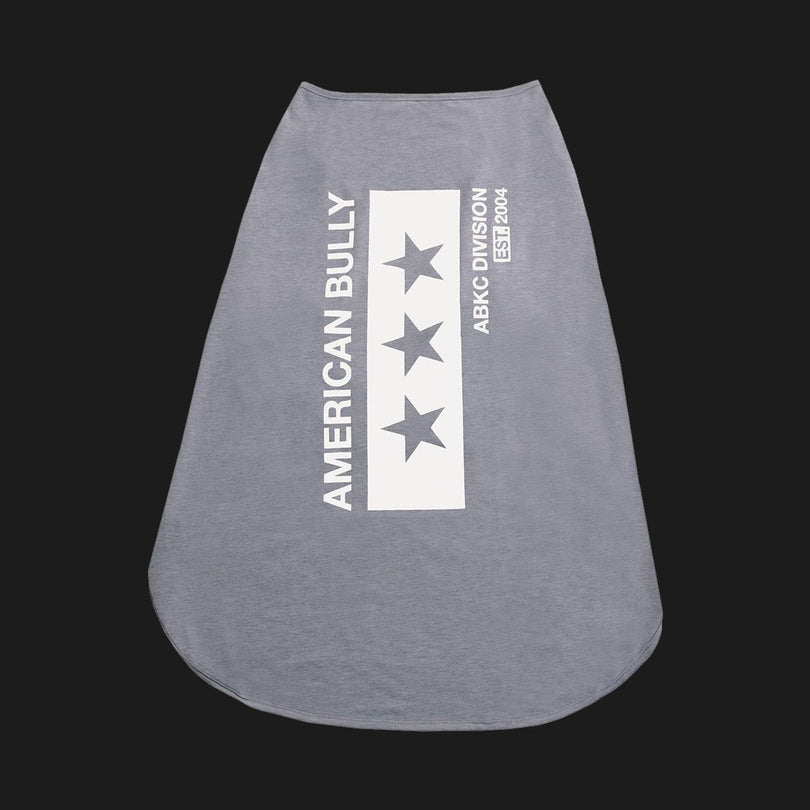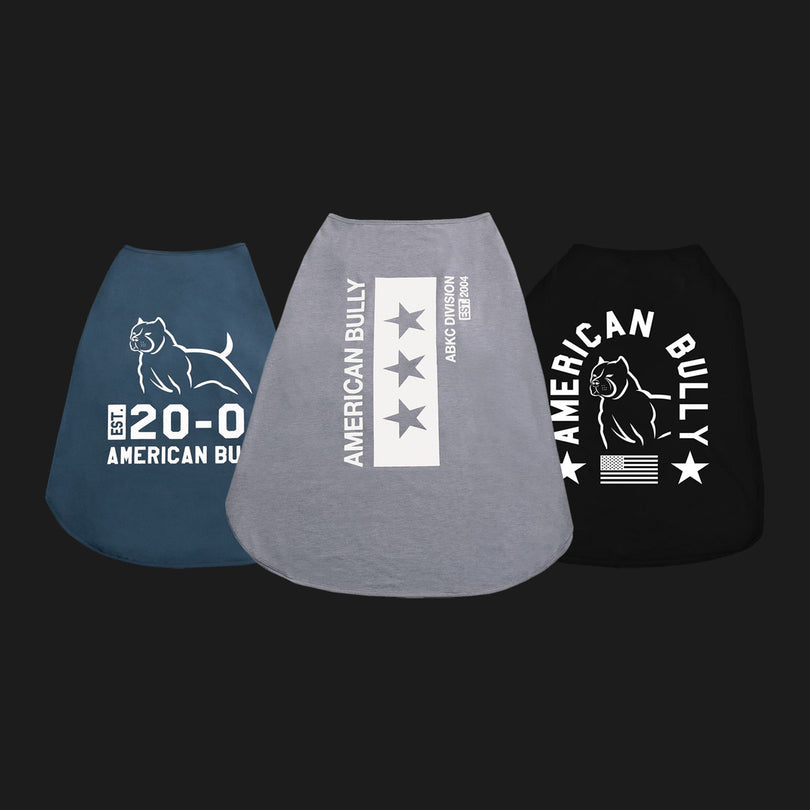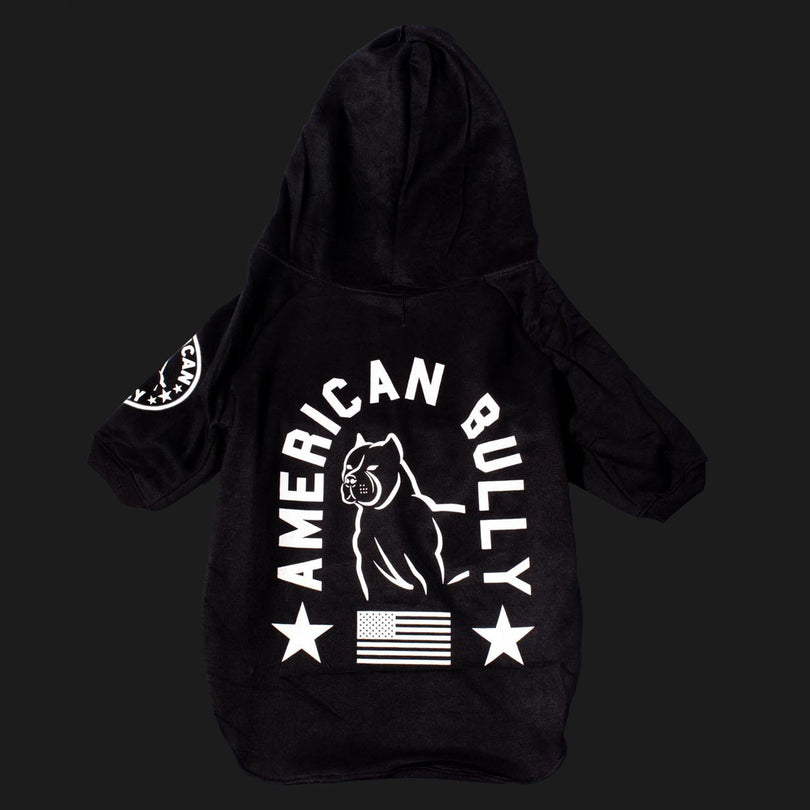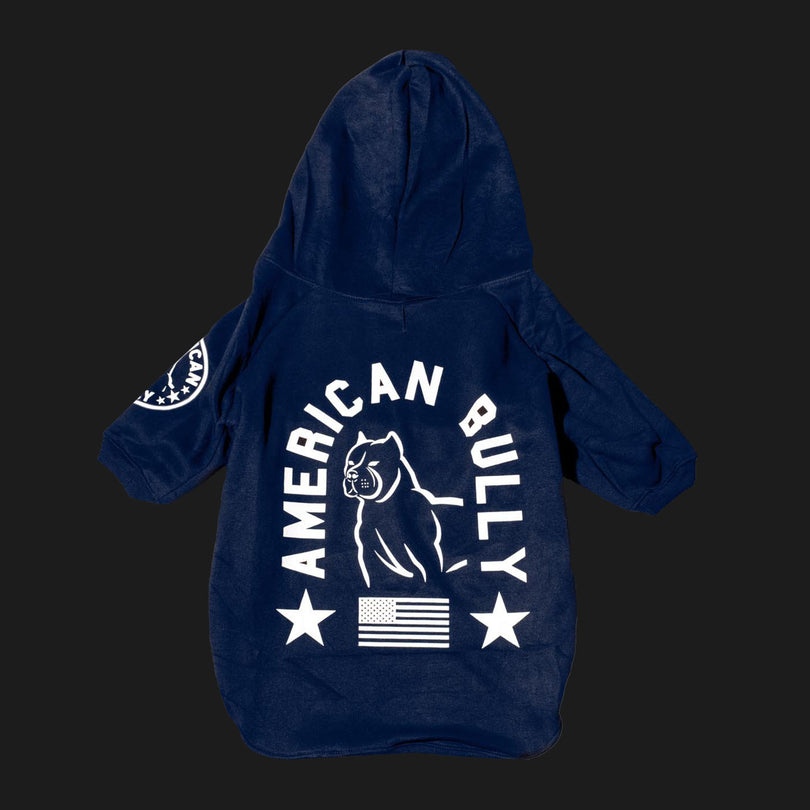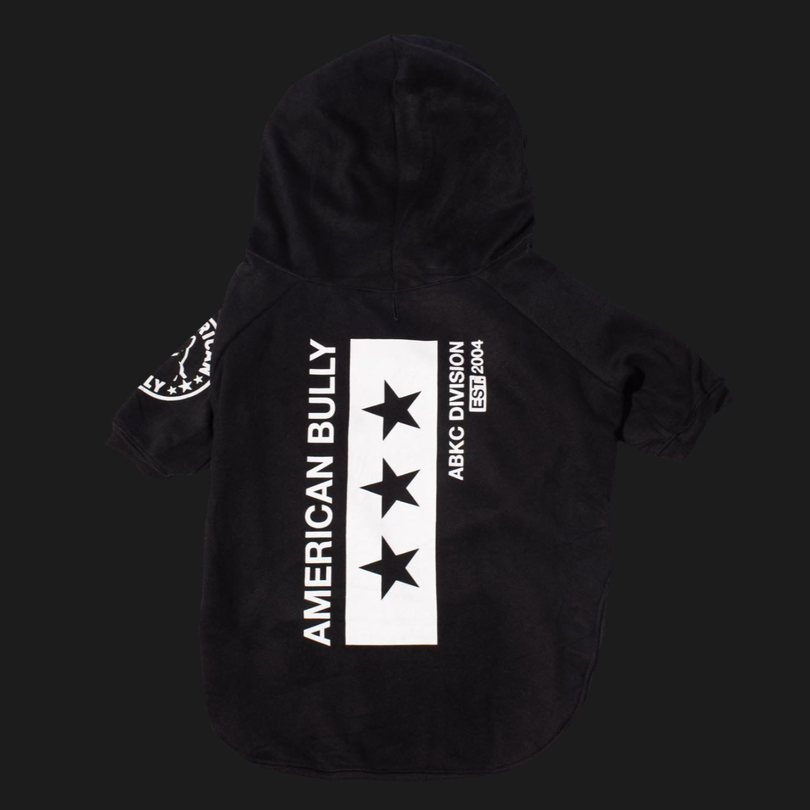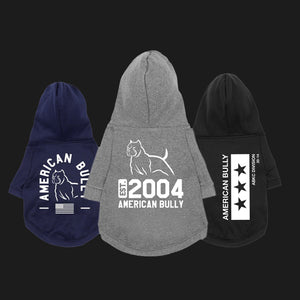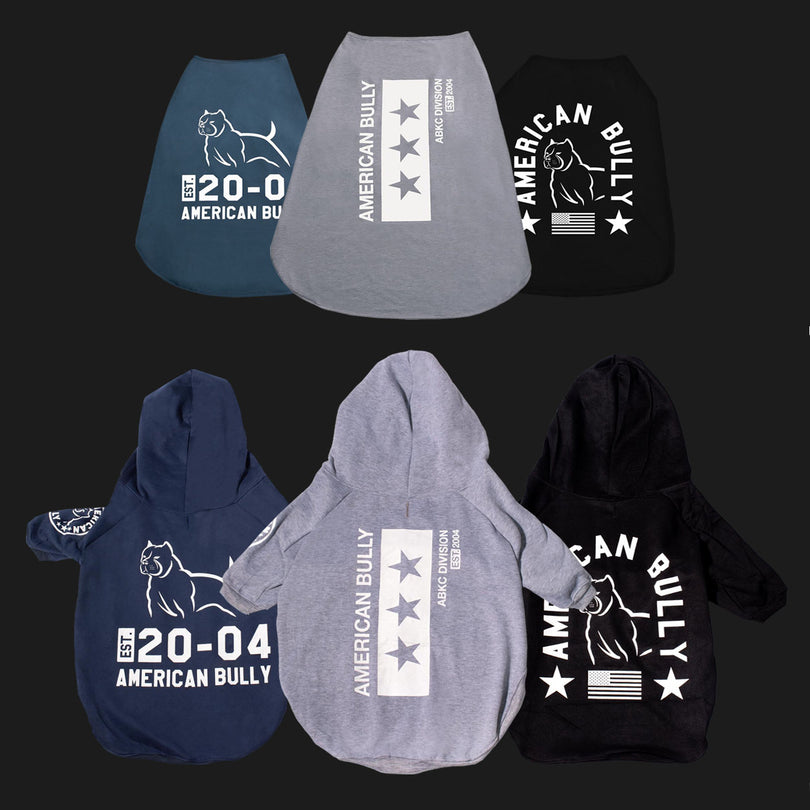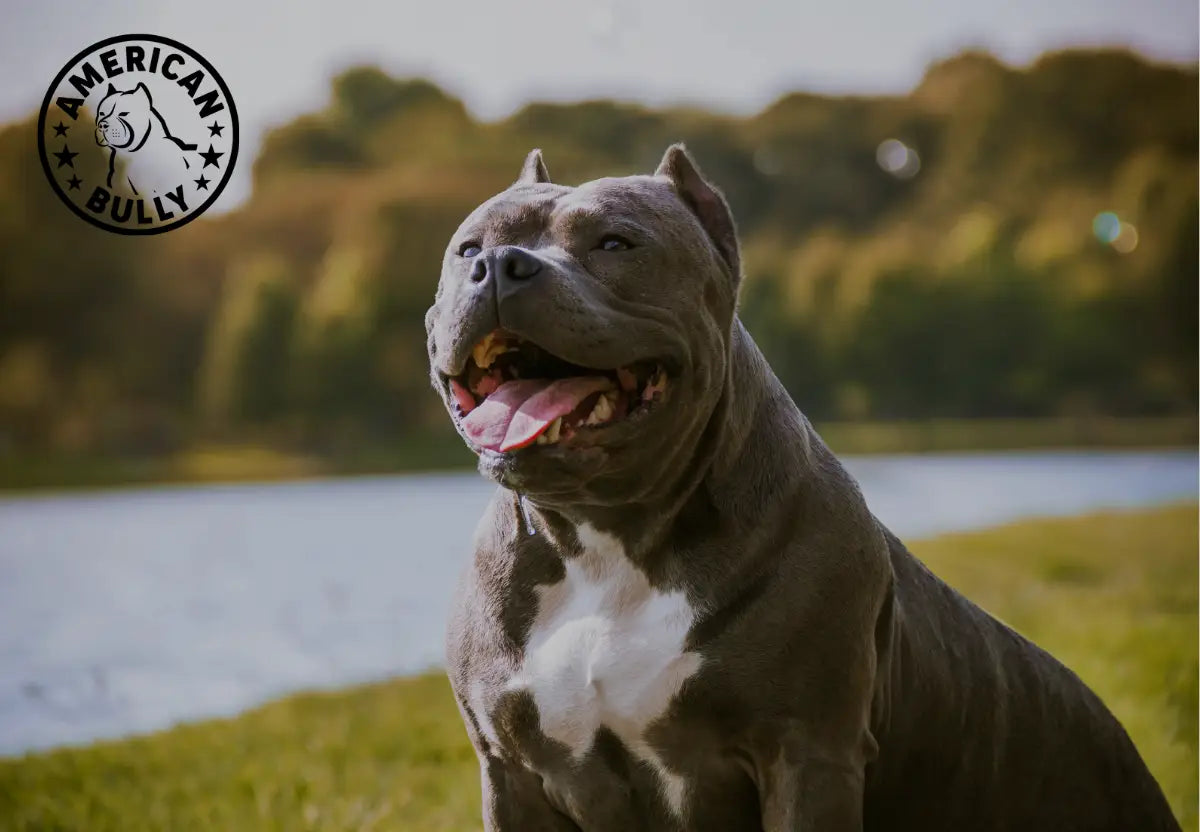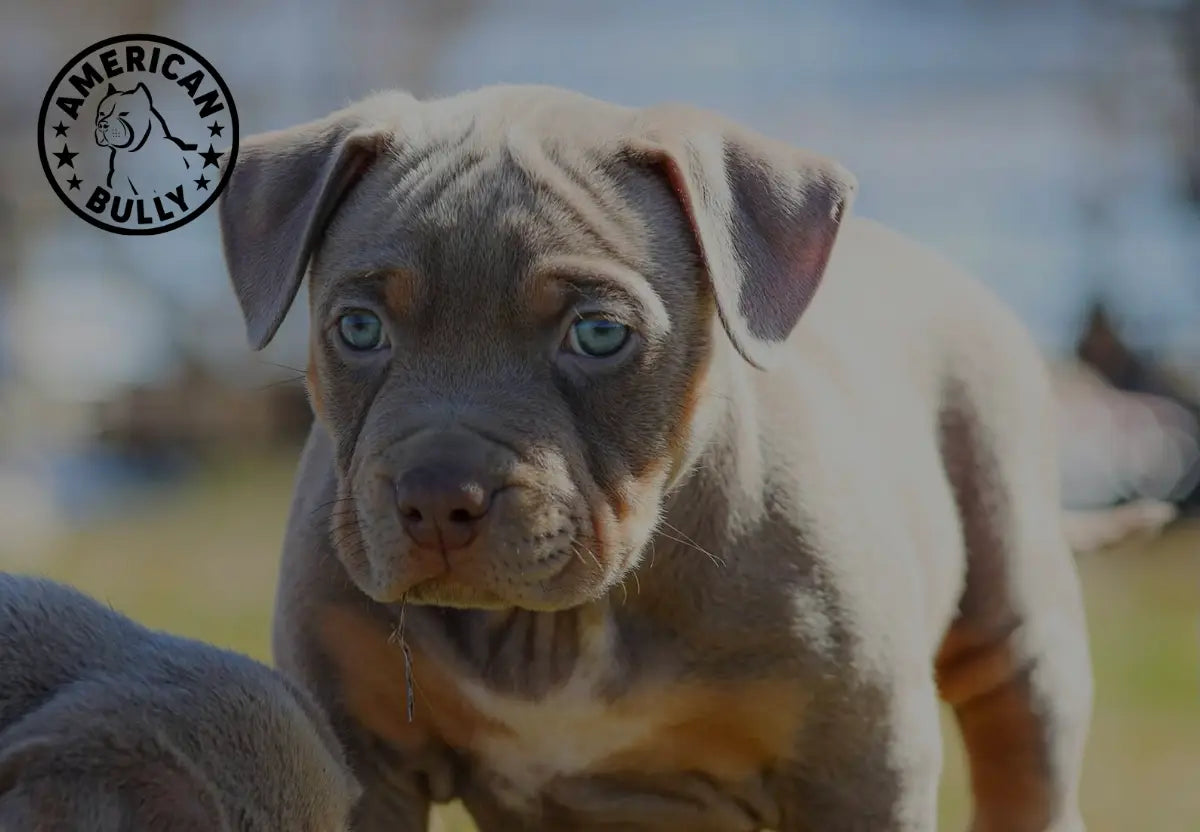The American Bully, a breed celebrated for its muscular build, loyal temperament, and striking appearance, captivates dog enthusiasts worldwide. One of the most fascinating aspects of this breed is its diverse array of coat colors and patterns, which range from solid hues to intricate combinations. These variations aren't just aesthetically pleasing—they're the result of complex genetic interactions. For breeders, owners, and admirers of the American Bully, understanding the genetics behind coat colors is essential for appreciating the breed's diversity, making informed breeding decisions, and ensuring healthy litters. This blog delves into the science of coat color genetics in American Bullies, exploring the genes, inheritance patterns, and factors that shape their stunning coats.
The Basics of Canine Coat Color Genetics
To understand the coat colors of American Bullies, we must first grasp the fundamentals of canine genetics. A dog's coat color is determined by the interaction of multiple genes, each contributing to the production, distribution, and type of pigments in the coat. The two primary pigments responsible for coat color in dogs are:
-
Eumelanin: A dark pigment responsible for black, liver (brown), blue (diluted black), and lilac (diluted liver) colors.
-
Pheomelanin: A lighter pigment that produces red, yellow, tan, or cream shades.
Genes act as instructions that control how these pigments are expressed. Each dog inherits two copies of every gene—one from its dam (mother) and one from its sire (father). These gene pairs, or alleles, can be dominant (expressed even if only one copy is present) or recessive (requiring two copies to be expressed). The interplay of dominant and recessive alleles across multiple gene loci determines the final coat color and pattern.
In American Bullies, coat color genetics are influenced by several key gene loci, including the A (Agouti), B (Brown), D (Dilution), E (Extension), K (Dominant Black), and M (Merle) loci. Let’s explore each of these in detail and how they manifest in the breed.
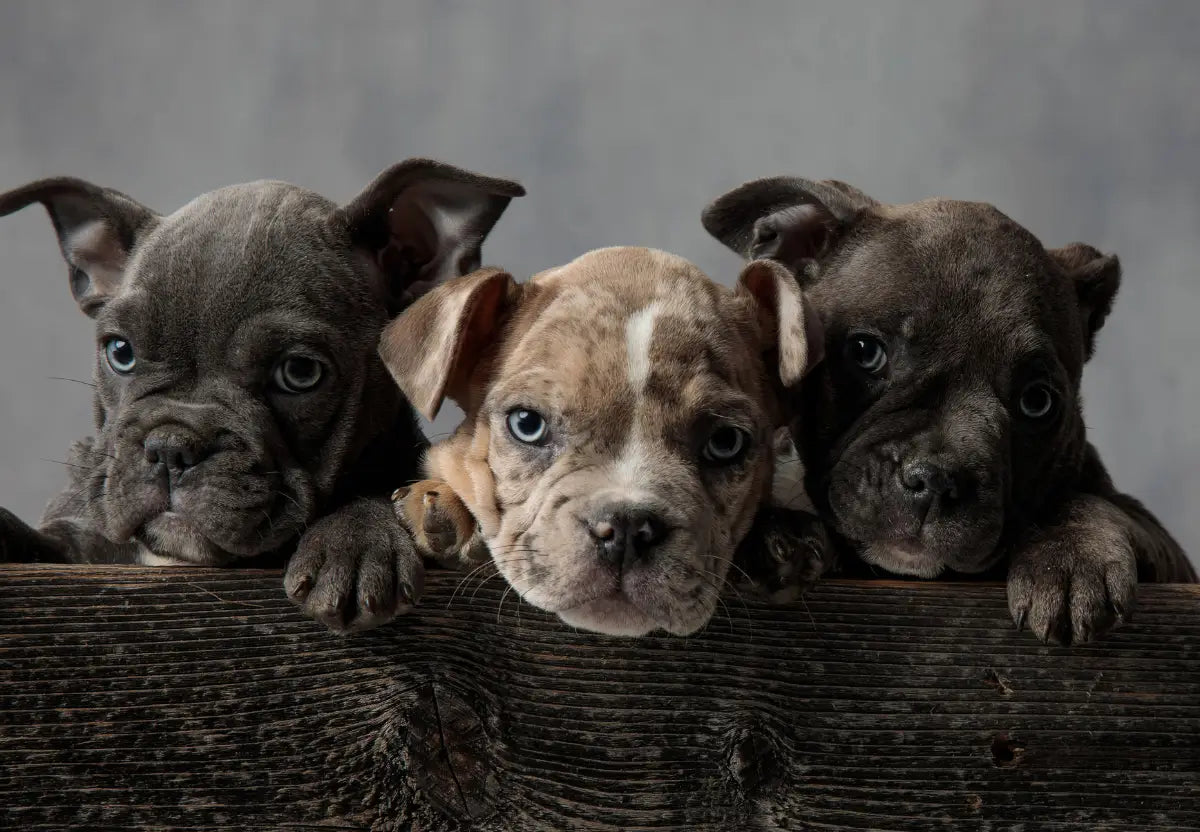
The Key Genetic Loci for American Bully Coat Colors
1. The A Locus (Agouti Series)
The A locus controls the distribution of eumelanin and pheomelanin across a dog’s coat, resulting in patterns such as fawn, sable, or tricolor. The alleles at this locus, listed in order of dominance, are:
-
A^y^: Sable or fawn, where pheomelanin dominates with eumelanin tipping or shading.
-
a^w^: Wild sable, less common in American Bullies.
-
a^t^: Tan points, producing a black-and-tan or tricolor pattern.
-
a: Recessive black, rare and requiring two copies to express a solid black coat.
In American Bullies, the A^y^ allele is prevalent, leading to fawn or sable coats often seen in combination with other loci. For example, a fawn American Bully with tan points may carry the a^t^ allele. The expression of A locus patterns can be modified by other genes, such as the K locus, which we’ll discuss later.
2. The B Locus (Brown Series)
The B locus determines whether eumelanin appears as black or liver (brown). The alleles are:
-
B: Dominant, produces black eumelanin.
-
b: Recessive, produces liver (brown) eumelanin when two copies (b/b) are present.
An American Bully with the B/B or B/b genotype will have black-based colors, while a b/b dog will exhibit liver-based colors, such as chocolate. This locus affects not only the coat but also the nose, lips, and eye rims. For instance, a chocolate American Bully will have a liver nose, distinguishing it from a black-nosed counterpart.
3. The D Locus (Dilution Series)
The D locus controls the intensity of eumelanin, diluting black or liver to lighter shades. The alleles are:
-
D: Dominant, allows full color expression (non-diluted).
-
d: Recessive, dilutes color when two copies (d/d) are present.
A d/d genotype results in striking dilute colors in American Bullies:
-
Black (B/- D/-) dilutes to blue (B/- d/d).
-
Liver (b/b D/-) dilutes to lilac (b/b d/d).
Blue and lilac American Bullies are highly sought after for their unique, muted tones. However, breeders must be cautious, as the dilution gene has been associated with health issues like color dilution alopecia in some breeds, though this is less common in American Bullies.
4. The E Locus (Extension Series)
The E locus determines whether a dog can produce pheomelanin (red/yellow) or only eumelanin. The alleles are:
-
E: Dominant, allows pheomelanin expression.
-
e: Recessive, restricts pheomelanin, resulting in a solid eumelanin-based coat (black, liver, blue, or lilac) when two copies (e/e) are present.
An American Bully with the e/e genotype will lack tan or red markings, displaying a solid color based on the B and D loci. For example, an e/e B/- d/d dog would be a solid blue. The E locus interacts with the A locus to produce patterns like fawn or tricolor when pheomelanin is expressed.
5. The K Locus (Dominant Black Series)
The K locus governs whether a dog expresses the A locus patterns or a solid eumelanin-based coat. The alleles, in order of dominance, are:
-
K^B^: Dominant black, producing a solid black-based coat (modified by B and D loci).
-
k^br^: Brindle, allowing A locus patterns with eumelanin stripes overlaying pheomelanin.
-
k: Recessive, allows full expression of A locus patterns.
A K^B^/- American Bully will have a solid black, blue, liver, or lilac coat, overriding A locus patterns. A k^br^/k^br^ or k^br^/k dog may display brindle, a popular pattern in the breed, characterized by dark stripes over a fawn or tan base. Dogs with k/k express A locus patterns like fawn or tan points without brindle.
6. The M Locus (Merle Series)
The M locus is responsible for the merle pattern, a mottled effect where patches of diluted and full color create a marbled appearance. The alleles are:
-
M: Dominant, produces the merle pattern.
-
m: Recessive, results in a non-merle coat.
A M/m American Bully exhibits the merle pattern, which can affect black, liver, blue, or lilac coats, creating stunning variations like blue merle or lilac merle. However, the M/M genotype (double merle) is associated with severe health risks, including deafness, blindness, and skin issues. Responsible breeders avoid M/M pairings and often test for the M allele to ensure safe breeding practices.
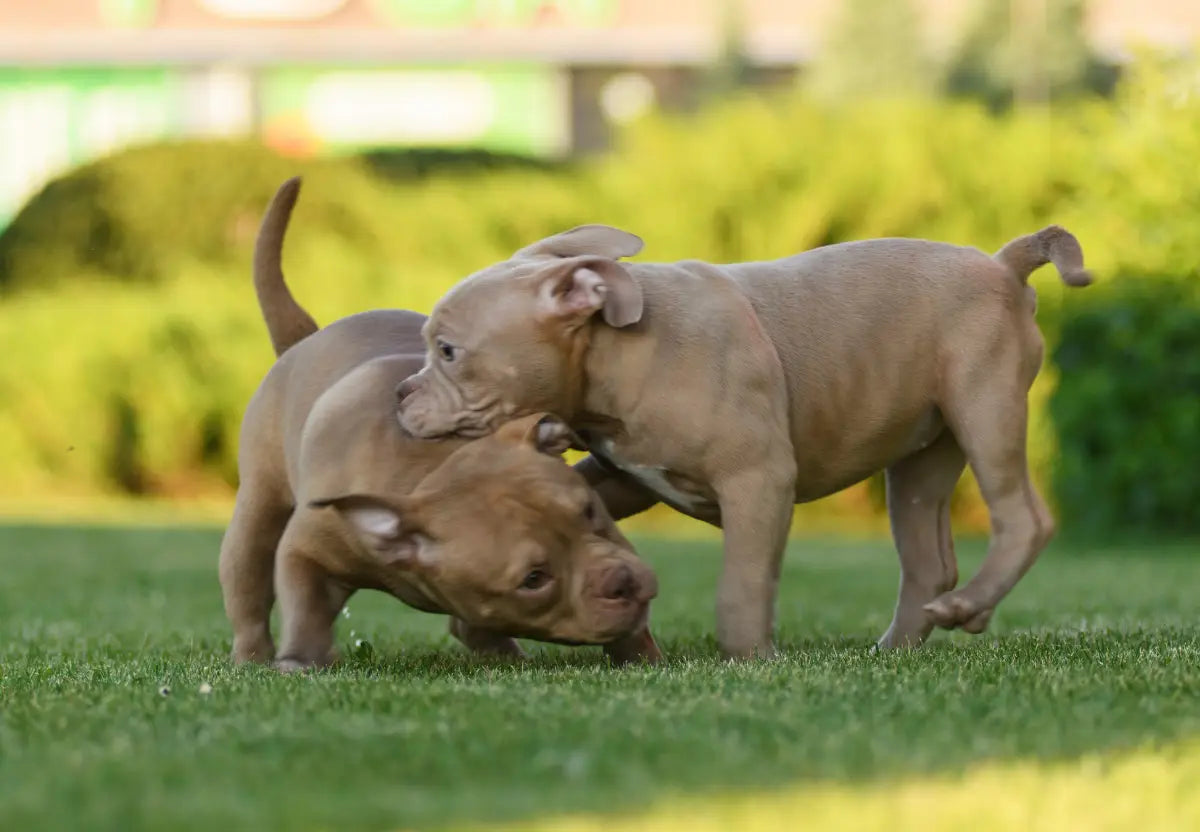
Common Coat Colors and Patterns in American Bullies
With these genetic loci in mind, let’s explore some of the most common and striking coat colors and patterns in American Bullies, along with their genetic basis:
1. Black
-
Genotype: K^B^/- B/- D/- E/-
-
Description: A solid black coat with black nose, lips, and eye rims. The dominant K^B^ allele overrides A locus patterns, and the B and D loci ensure full black eumelanin expression.
2. Blue
-
Genotype: K^B^/- B/- d/d E/-
-
Description: A diluted black coat with a grayish-blue hue and matching blue nose. The d/d genotype dilutes black eumelanin, creating this sleek, modern look popular among American Bully enthusiasts.
3. Chocolate (Liver)
-
Genotype: K^B^/- b/b D/- E/-
-
Description: A rich brown coat with a liver nose. The b/b genotype shifts eumelanin from black to liver, producing a warm, chocolatey tone.
4. Lilac
-
Genotype: K^B^/- b/b d/d E/-
-
Description: A diluted liver coat with a soft, lavender-like hue and lilac nose. This rare color results from the combination of b/b (liver) and d/d (dilution), making lilac Bullies highly prized.
5. Fawn
-
Genotype: k/k A^y^/- B/- D/- E/-
-
Description: A tan or yellowish coat, often with a black mask or tipping. The A^y^ allele promotes pheomelanin, and the k/k genotype allows A locus expression without brindle or dominant black.
6. Brindle
-
Genotype: k^br^/- A^y^/- or a^t^/- B/- D/- E/-
-
Description: A fawn or tan base with dark stripes (black, blue, or liver). The k^br^ allele overlays eumelanin stripes on A locus patterns, creating a tiger-like effect.
7. Tricolor
-
Genotype: k/k a^t^/a^t^ B/- D/- E/-
-
Description: A black, blue, or liver base with tan points and white markings. The a^t^ allele produces tan points on the face, legs, and chest, often combined with white from the S locus (not discussed here but responsible for white spotting).
8. Merle
-
Genotype: M/m (any combination of B, D, K, or A loci)
-
Description: A mottled pattern with patches of diluted and full color. Merle can overlay black, blue, liver, or lilac coats, but ethical breeding avoids M/M pairings due to health risks.
Genetic Testing and Responsible Breeding
Understanding coat color genetics is not only fascinating but also critical for responsible breeding. Breeders can use genetic testing to identify the alleles their American Bullies carry, enabling them to predict litter outcomes and avoid undesirable combinations. For example:
-
Merle Testing: Testing for the M allele prevents M/M pairings, reducing the risk of double merle health issues.
-
Dilution Testing: Identifying d/d carriers helps breeders anticipate blue or lilac puppies and monitor for potential skin concerns.
-
Color Pattern Testing: Testing for A, K, and E loci clarifies whether a dog carries recessive alleles that could produce unexpected colors in offspring.
Reputable breeders prioritize health and temperament over rare colors, using genetic insights to maintain the breed’s standard and well-being. For instance, while lilac or merle Bullies are visually striking, overbreeding for these traits without regard for health can lead to genetic bottlenecks or increased disease prevalence.
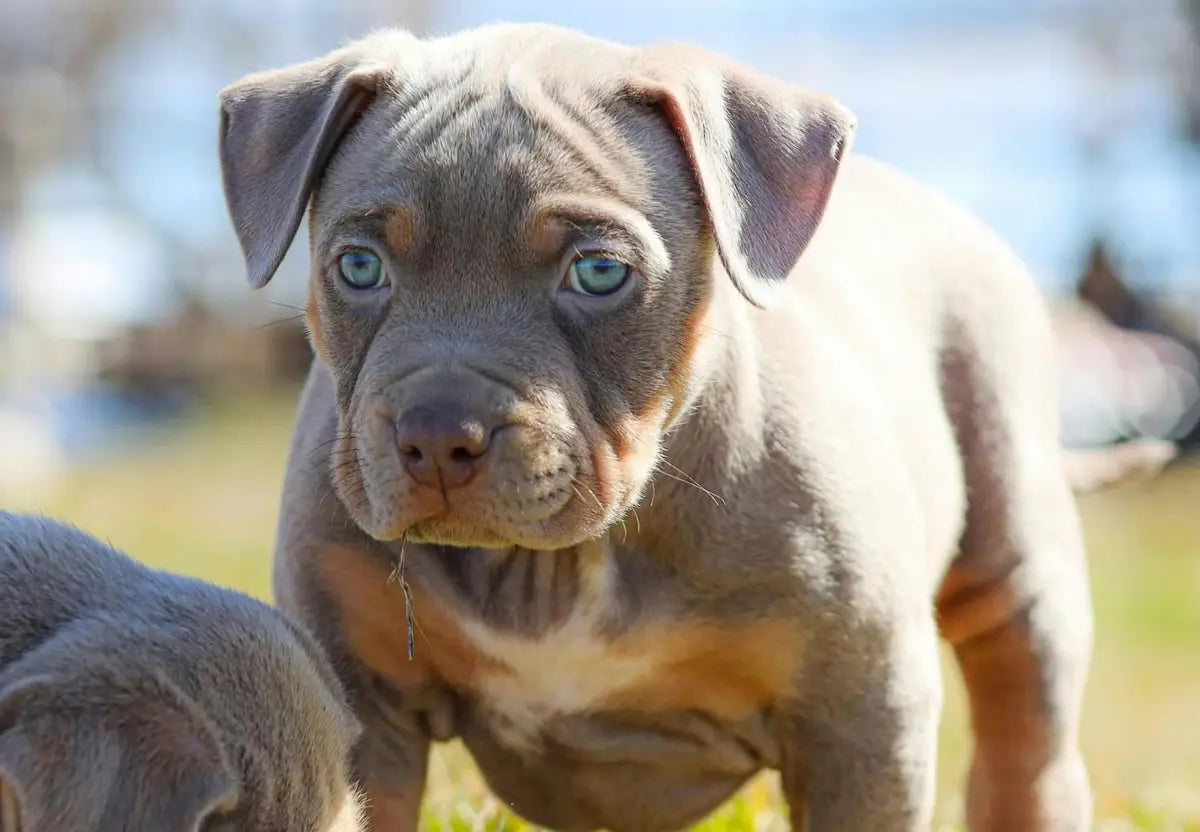
The Role of Environment and Epigenetics
While genetics primarily dictate coat color, environmental factors and epigenetics can subtly influence appearance. Nutrition, sunlight exposure, and hormonal changes may affect coat sheen or intensity. For example, a poorly nourished American Bully might have a dull coat, even if genetically predisposed to vibrant colors. Epigenetic modifications—chemical changes that affect gene expression without altering DNA—can also play a role, though their impact on coat color is less understood in dogs.
Debunking Myths About Coat Colors
Several myths surround American Bully coat colors, often fueled by misinformation or marketing hype. Let’s address a few:
-
Myth: Rare colors like lilac or merle indicate superior quality.
-
Fact: Coat color does not affect a dog’s health, temperament, or suitability as a pet. Quality depends on breeding practices, not color rarity.
-
-
Myth: Blue Bullies always have skin problems.
-
Fact: While the dilution gene (d/d) is linked to color dilution alopecia in some breeds, it’s not a universal issue in American Bullies. Proper care and breeding minimize risks.
-
-
Myth: Merle is a natural trait in all American Bullies.
-
Fact: Merle is not native to the American Bully breed and was introduced through crossbreeding. Ethical breeders use merle cautiously due to associated health risks.
-
The Cultural Appeal of Coat Colors
Coat colors play a significant role in the American Bully community, influencing trends and preferences. Blue and lilac Bullies, for instance, have surged in popularity due to their sleek, modern aesthetic, often showcased on social media platforms like Instagram and X. Tricolor and brindle patterns appeal to those who admire classic, bold looks. Breeders and owners often celebrate their dogs’ unique coats at shows, where judges evaluate conformation but not color specifically. However, the pursuit of rare colors can sometimes overshadow the breed’s core qualities—loyalty, strength, and companionship.
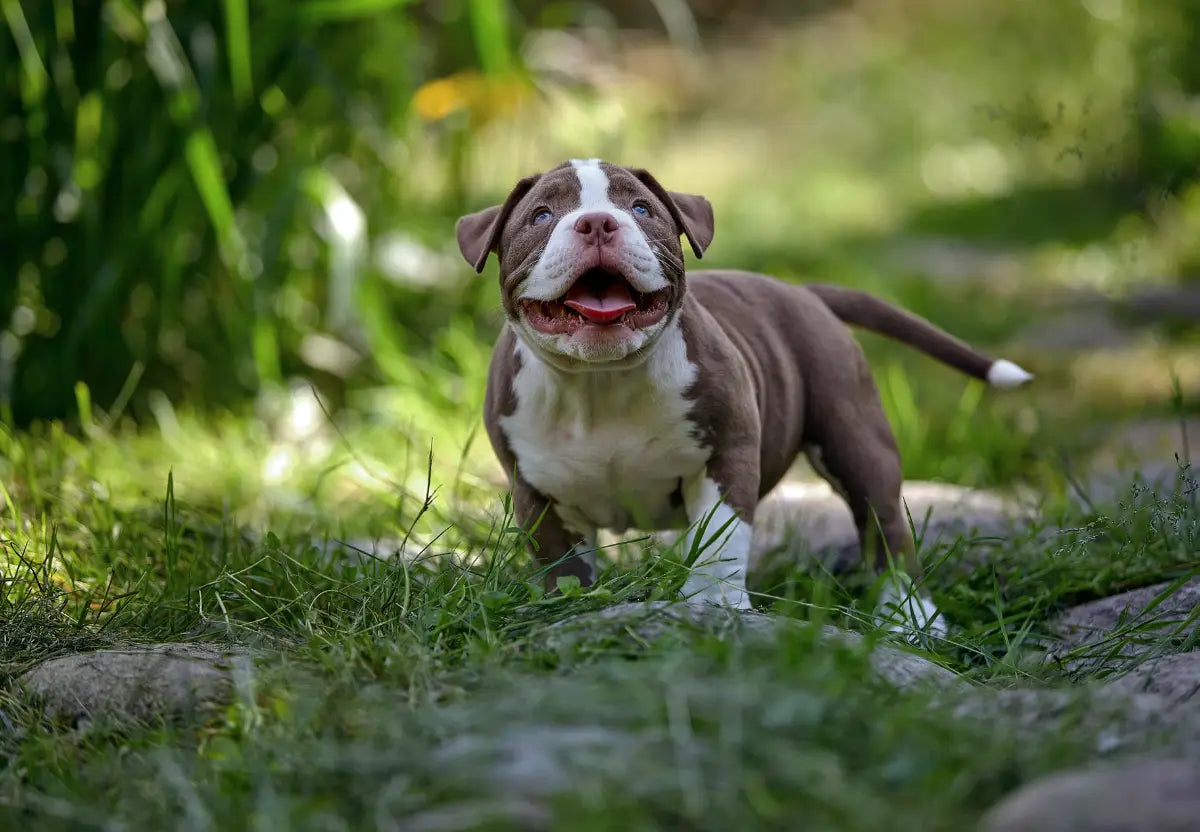
Conclusion
The coat colors of American Bullies are a testament to the intricate dance of genetics, where alleles at multiple loci combine to create a spectrum of stunning hues and patterns. From the deep richness of chocolate to the ethereal glow of lilac, each color tells a story of inheritance and variation. For breeders, understanding these genetics is a tool for crafting healthy, diverse litters while preserving the breed’s integrity. For owners, it’s a window into the science behind their dog’s beauty. By embracing genetic knowledge and responsible practices, the American Bully community can ensure that these magnificent dogs continue to shine—inside and out—for generations to come.
Whether you’re a breeder planning your next litter, an owner curious about your Bully’s coat, or simply a fan of the breed, we hope this exploration of coat color genetics has deepened your appreciation for the American Bully. Share your favorite Bully colors in the comments, and visit americanbully.com for more resources on this incredible breed!

